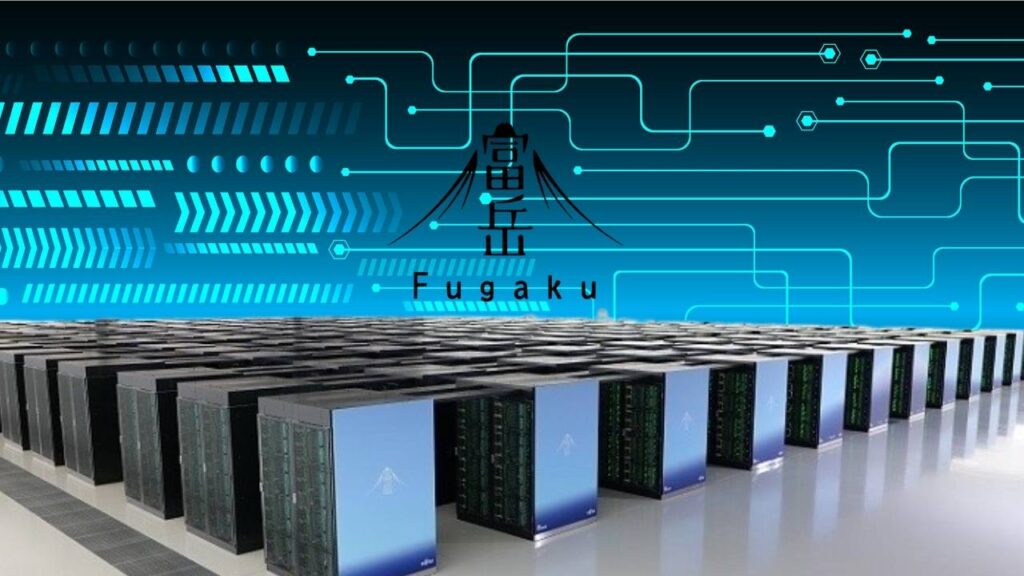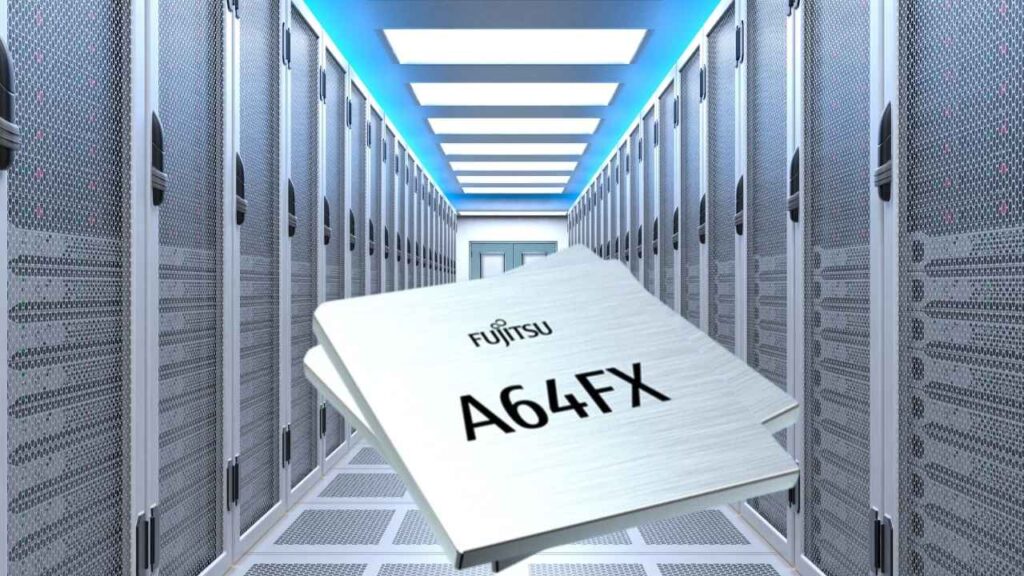Fugaku Remains the World’s Graph King: Fugaku, the world-renowned supercomputer based in Kobe, Japan, continues to set the gold standard in global supercomputing. As of June 2025, Fugaku has maintained its top position in the Graph500 rankings for an unprecedented 11 consecutive terms. This achievement is not just a testament to cutting-edge technology but also to the power of collaboration, innovation, and vision in the field of high-performance computing (HPC).

This article explores Fugaku’s journey, the significance of the Graph500 benchmark, real-world applications, and practical insights for professionals and students alike. Whether you’re a curious ten-year-old or a seasoned IT leader, you’ll find valuable, authoritative information here, free of misleading data and focused on clarity and expertise1.
Fugaku Remains the World’s Graph King
| Feature/Stat | Details |
|---|---|
| Supercomputer Name | Fugaku |
| Developers | RIKEN & Fujitsu |
| Location | Kobe, Japan |
| Graph500 Ranking | #1 for 11 consecutive terms (as of June 2025) |
| Graph500 Score | 204.068 TeraTEPS (BFS) |
| Total Nodes | 158,976 |
| TOP500 Ranking | 7th (June 2025) |
| HPCG Ranking | 2nd (June 2025) |
| HPL-MxP Ranking | 6th (June 2025) |
| Major Applications | Life sciences, disaster prevention, energy, manufacturing, basic science, big data |
| Official Website | Fugaku at RIKEN |
Fugaku’s reign as the world’s top graph analytics supercomputer is more than a technical achievement—it’s a testament to the power of collaboration, innovation, and vision. By staying at the forefront of global rankings, Fugaku is helping solve some of the world’s most pressing challenges, from disaster prevention to life sciences and beyond. Whether you’re a student, a professional, or just someone fascinated by technology, Fugaku’s story is a reminder that big dreams, backed by expertise and teamwork, can change the world.
What is Fugaku?
Fugaku is a supercomputer housed at the RIKEN Center for Computational Science in Kobe, Japan. Launched in 2021 and jointly developed by RIKEN and Fujitsu, Fugaku is named after an alternative name for Mount Fuji, symbolizing its towering presence in the world of computing.
Key Features
- Processor: Fugaku is powered by Fujitsu’s A64FX processors, the first ARM-based chips to lead the global supercomputing rankings. Each processor contains 48 cores designed for high parallelism and energy efficiency.
- Nodes: The system consists of nearly 160,000 interconnected nodes, each acting like a powerful computer in its own right. Together, they form a vast network capable of tackling the world’s most complex problems.
- Performance: Fugaku has achieved over 442 petaflops (quadrillion floating-point operations per second) in the LINPACK benchmark and over 2 exaflops in mixed-precision AI benchmarks, making it one of the fastest and most versatile supercomputers ever built.
Understanding the Graph500 Benchmark
What is Graph500?
The Graph500 benchmark is a global standard for measuring a supercomputer’s ability to process and analyze large-scale graphs. Graphs are mathematical structures used to model relationships between objects—think of social networks, transportation systems, or the spread of diseases.
The primary test in Graph500 is the Breadth-First Search (BFS), which evaluates how quickly a system can explore all connections from a starting point in a massive network. The results are measured in TeraTEPS (trillion traversed edges per second).
Why Does Graph500 Matter?
- Real-World Relevance: Many of today’s most critical problems—like tracking pandemics, analyzing social media, or securing digital infrastructure—require fast and efficient graph analytics.
- Beyond Raw Speed: Unlike traditional benchmarks that focus solely on arithmetic speed, Graph500 highlights a system’s ability to handle complex, data-intensive workloads.
Fugaku’s Performance
- Score: Fugaku achieved 204.068 TeraTEPS, setting a new bar for graph analytics.
- Consecutive Wins: Its 11-term streak at #1 in Graph500 is unmatched, demonstrating consistent leadership and reliability.
- Collaborative Effort: This success is the result of collaboration between RIKEN, the University of Tokyo, Fixstars Corporation, Nippon Telegraph and Telephone Corporation (NTT), and Fujitsu.
How Fugaku Works: Hardware and Software
Hardware Innovations
- A64FX Processors: These ARM-based CPUs are designed for both performance and energy efficiency. Each processor supports high memory bandwidth, which is crucial for data-intensive tasks like graph analytics.

- Interconnects: Fugaku uses a proprietary “torus fusion” network, allowing nodes to communicate quickly and efficiently. This is vital for tasks that require constant data exchange across thousands of computers.
- Energy Efficiency: Fugaku is engineered to deliver top-tier performance while minimizing power consumption, making it a model for sustainable supercomputing.
Software and Algorithms
- Open-Source Collaboration: Fugaku’s software stack is based on open standards and supports widely-used programming models, making it accessible for researchers globally.
- Algorithmic Excellence: Advanced algorithms, such as those developed by NTT, have further boosted Fugaku’s BFS performance, allowing it to process even larger and more complex graphs.
Real-World Impact: Fugaku in Action
Fugaku is not just a technological marvel; it’s a tool for solving real-world problems across multiple domains.
Life Sciences
- Drug Discovery: Fugaku has been instrumental in simulating molecular interactions, accelerating the search for new medicines and vaccines.
- Pandemic Response: During the COVID-19 pandemic, Fugaku modeled virus transmission in public spaces, helping inform public health policies.
Disaster Prevention
- Weather Forecasting: Fugaku’s speed and accuracy have enabled real-time prediction of typhoons and tornadoes, providing earlier warnings and potentially saving lives.
- Earthquake Simulation: By modeling seismic activity, Fugaku helps researchers understand and prepare for earthquakes.
Energy and Environment
- Climate Modeling: Fugaku simulates complex climate systems, aiding in the study of global warming and environmental change.
- Energy Optimization: The system analyzes vast datasets to improve energy efficiency in industries and urban planning.
Manufacturing and Industry
- Material Science: Fugaku simulates new materials at the atomic level, helping manufacturers develop stronger, lighter, and more sustainable products.
- Process Optimization: Industries use Fugaku to model and refine manufacturing processes, reducing waste and increasing productivity.
Socioeconomic Analysis
- Big Data Analytics: Fugaku processes massive datasets to uncover trends in economics, transportation, and public policy, supporting smarter decision-making.
Fugaku’s Place in Global Rankings
While Fugaku leads the Graph500, it also performs exceptionally well in other major benchmarks:
- TOP500: Fugaku is currently ranked 7th, based on the LINPACK benchmark, which measures raw floating-point performance.
- HPCG: It holds the 2nd position in the High Performance Conjugate Gradient benchmark, which focuses on real-world application performance.
- HPL-MxP: Fugaku is 6th in this benchmark, which tests deep learning and AI capabilities.
These results confirm Fugaku’s versatility and leadership across a broad spectrum of computational tasks.
The Future: From Fugaku to FUJITSU-MONAKA
Building on Fugaku’s success, Fujitsu is developing FUJITSU-MONAKA, a next-generation Arm-based CPU using advanced 2-nanometer technology. This new processor promises even greater performance, efficiency, and reliability, ensuring that Japan remains at the forefront of global supercomputing.
Integrated Quantum Photonics Gains Traction as Scalable Quantum Path
MIT Demonstrates Quantum Simulator with Adjustable Synthetic Magnetic Fields
FAQs About Fugaku Remains the World’s Graph King
What is a supercomputer?
A supercomputer is a machine designed to perform extremely complex calculations at incredibly high speeds. They are used for scientific research, weather forecasting, engineering, and more.
What makes Fugaku special?
Fugaku is the first top-ranked supercomputer to use ARM-based processors, making it both powerful and energy-efficient. Its ability to process massive graphs sets it apart from competitors.
What is the Graph500 benchmark?
Graph500 measures how quickly a supercomputer can analyze large graphs, which are networks of connected data points. It’s especially important for big data, cybersecurity, and scientific simulations.
How is Fugaku used in real life?
Fugaku helps scientists discover new medicines, predict natural disasters, model climate change, and analyze big data for social and economic insights.
Can I access Fugaku?
Fugaku is available for shared use by researchers and institutions. Visit the official RIKEN website for details on access and collaboration.
How does Fugaku contribute to sustainability?
Fugaku is engineered for energy efficiency, using advanced cooling and power management to minimize environmental impact while delivering world-class performance.
What are some future trends in supercomputing?
Future supercomputers will likely feature even more powerful processors, greater energy efficiency, and expanded use of AI and machine learning. Technologies pioneered by Fugaku, such as ARM-based CPUs and advanced interconnects, are setting the stage for the next generation of high-performance computing.
Practical Advice: How Can Professionals Benefit from Fugaku’s Success?
- Stay Updated: Follow advancements in supercomputing to understand how new technologies can impact your field.
- Leverage Open-Source Tools: Many of the software innovations developed for Fugaku are available to the public. Explore open-source libraries and frameworks for graph analytics and parallel computing.
- Collaborate: If you’re in academia or industry, consider partnerships with institutions using Fugaku or similar systems to accelerate your research or product development.
- Prepare for the Future: As new processors like FUJITSU-MONAKA become available, anticipate changes in hardware and software that could benefit your organization.
- Invest in Skills: Understanding parallel computing, high-performance algorithms, and data analytics will be increasingly valuable as supercomputing becomes more integrated into various industries.






